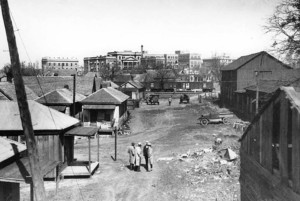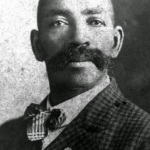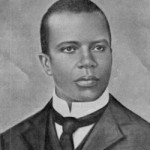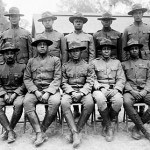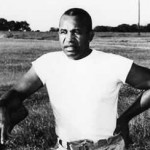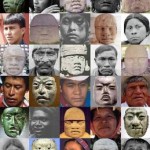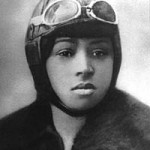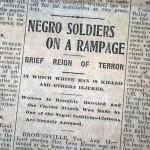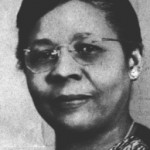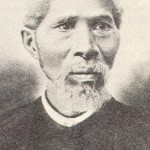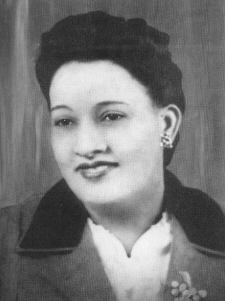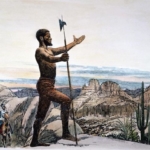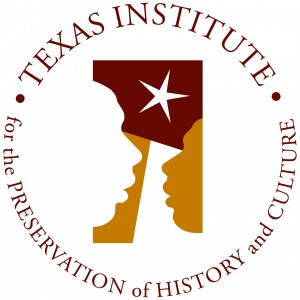
Welcome to the Texas Institute for the Preservation of History and Culture (TIPHC)
Documenting the complete history of African American Texans
“Know your history, know yourself“
African descendants have had a presence in Texas for almost 500 years, maybe longer. The territory was the northernmost area of New Spain (Mexico) in 1528 when Esteban (Estevanico), a Moroccan Moor servant, waded ashore with a group of Spanish conquistadors near what is now Galveston Island and established himself as the first known African in what would become Texas. Since, African Americans have contributed significantly in all facets of the building of the Lone Star State — its infrastructure, image, and culture. For that, the Texas Institute for the Preservation of History and Culture is charting every aspect of the black experience in Texas as an online encyclopedia.
Highlighting Peer-Reviewed Essays
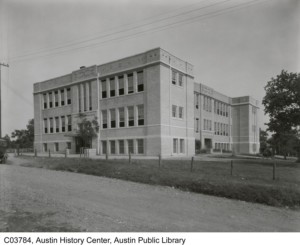
L.C. Anderson HS, circa early 1900s, located on Pennsylvania Street.
Austin’s L.C. Anderson High School as an Equalization School: 1953-1971
By Rebekah Dobrasko
In the 1950s, states, municipalities, and school districts across the southern United States scrambled to construct new African American public schools in order to prove they truly provided “separate but equal” segregated schools. As the National Association for the Advancement of Colored People (NAACP) and black students began winning cases in the courts for equalization or desegregation, Southern politicians finally turned their attention to equalizing primary and secondary public school systems. In Austin, Texas, there was one white high school (Austin High) and one black high school (L.C. Anderson High). A new L.C. Anderson High School campus opened in 1953 during the middle of school equalization and desegregation lawsuits. Today, the school sits on a hill in East Austin, a physical example of the city’s efforts to equalize its segregated school system.
Read the entire essay here.
Innovative Perspectives in Agriculture Development: The Role of Slavery and Land Grant HBCU’s in Texas Black Communities
By Na’Shon Z. Edwards
Institutions classified as Historically Black Colleges and Universities were consequences of the Agricultural College Act of 1890 (Castle and Christy,1992), which is also known as the Second Morrill Act (Castle and Christy, 1992). This act of Congress allocated resources to states to establish normal tertiary schools that focused on agricultural, industrial, and educational training for people of color. The Second Morrill Act provided emancipated slaves with the intellectual tools to contribute to the development of Texas agriculture by way of techniques, theories, and inventions often resulting in them becoming contributing members to their community. Today, the normal schools are now called HBCUs and continue their mission of cultivating and educating minorities in various disciplines.
Read the entire essay here.
Honoring Juneteenth
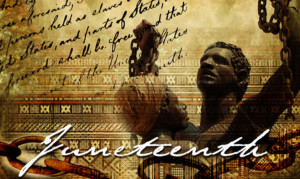
The Texas Institute for the Preservation of History and Culture is tasked with uplifting past, present, and future narratives anchored to this pivotal moment in Black history. On June 19, 1865 at Galveston, Gen. Gordon Granger of the Union Army announced that the Civil War had ended and all slaves in the former Confederate states were now free. This was two and a half years after President Abraham Lincoln issued his Emancipation Proclamation. However, the enslaved in Texas had never received the news of their freedom.
The Apocalyptic Regeneration
The TIPHC’s Online Exhibition About Juneteenth
Purchase the DVD
JUNETEENTH A Celebration of Freedom (26 mins)
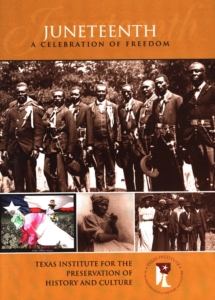 This DVD, produced by the TIPHC, provides an insightful perspective about this significant day in American history that is often misunderstood and overlooked. This is a compelling program that is popular with school classes and community groups alike. This documentary’s production was generously funded by The Brown Foundation, Inc. of Houston. Proceeds from the sale of the DVD benefit TIPHC public programs. To order your copy — $15.00 — please contact the TIPHC, 936-261-9836. For a preview, click here.
This DVD, produced by the TIPHC, provides an insightful perspective about this significant day in American history that is often misunderstood and overlooked. This is a compelling program that is popular with school classes and community groups alike. This documentary’s production was generously funded by The Brown Foundation, Inc. of Houston. Proceeds from the sale of the DVD benefit TIPHC public programs. To order your copy — $15.00 — please contact the TIPHC, 936-261-9836. For a preview, click here.
An Essay by Sharon Batiste Gillins
The Day Freedom Came
Mid-June in the year of our Lord, 1865, was so typical of Galveston in late spring. Families were going about their lives, businesses were operating, steamers went in and out of port, and merchants were selling goods. Farmers in the Houston area had welcomed days of rains that quenched corn crops, but the Island had been parched dry for weeks with no more than a sprinkle since the month began. The moon languished in its last quarter. Despite the apparent routine, this period in time was like no other in American history and life in Galveston, in Texas and in the nation would never be the same.
Read the entire essay here.
Paying Tribute to Genealogy
Civil Rights History and the Family of Judge Willie E.B. Blackmon
The former Houston Municipal Court judge recounts his family’s involvement in two prominent Civil Rights cases, Hall v. DeCuir and Brown v. Board of Education.
Read Judge Blackmon’s story here.
Support TIPHC Programming and Research
Your donations support research, exhibits, documentaries, internships, cultural events, lecture series, film screenings, Journal of History and Culture publications, outreach and much more. For more information on how you can donate to TIPHC, please contact Lauren Kelley, Interim Director of TIPHC, at (936) 261-9836 or Ldkelley@pvamu.edu.
Ron Goodwin Blog
Musings on contemporary black history-related topics from the noted PVAMU history professor.
A New Hope
Forgive me for borrowing the title of one of the most profitable films in history, “Star Wars: A New Hope.” I’ve always been enamored by space. I’m a child of the 1960s and I remember playing with my Major Matt Mason action figure (not a doll!) as my family and I watched Neil Armstrong step onto the moon and state “one small step for man, one giant leap for mankind” in 1969. I still [...]

